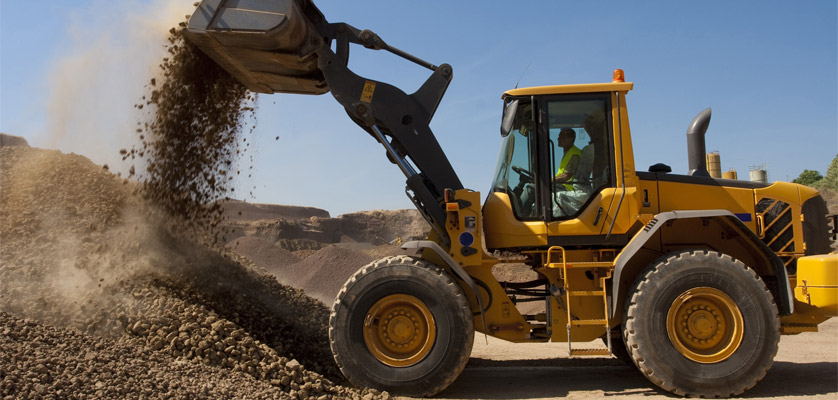The Wheels of Industry
The wheels of industry keep on turning, powering the economy and providing a multitude of products and services in many sectors. Hydraulic power keeps industries going - and has done for hundreds of years.
While the industrial revolution saw more factories and mass-produced products introduced, hydraulic power was around long before the 19th century. In fact, it was first harnessed by the Romans in around 27AD, according to historians, so it isn't a modern invention by any means.

© stocktributor / Adobe Stock
How does hydraulic power work?
Over the centuries, water has played a big part in the evolution of the human race. It is a powerful force of nature that we have harnessed for hundreds of years. Innovators harnessed the power of water to build water wheels, enabling us to produce all sorts of products.
Using this most basic form of hydraulic power, we have produced food, wood, tools, clothing, paper, marble, iron, cotton and wool. Today, hydraulic power is more sophisticated, although still relies on the principle of using pressurised fluid to produce power.
It is all around us, with everything from agricultural machinery and mining equipment to automobile manufacturers and space travel, relying on hydraulics to keep the industry going.
What is the history of hydraulics?
The earliest mention of hydraulic power was in Imperial Rome, a period which began in 27AD when water was used to power flour mills and to saw stone and timber.
In Britain, hydraulic power using water extracted lead from tin ore with a process called "hushing". The ancient mining method used a torrent of water to reveal mineral veins. The method is believed to have originated in Ancient Rome. It was first mentioned as being used in Britain in the lead mines of Elizabethan times.
The remnants of hushing can be found across the Pennines, at the Welsh lead mines of Ceredigion and Cwmystwyth, at the Stiperstones in Shropshire and the Great Dun Fell gully in Cumbria. The same method was developed into hydraulic mining and was used during the Gold Rush in California, which began in 1848.
In 1795, Joseph Bramah patented the design of the hydraulic press. Soon afterwards, American innovators developed a technique for producing electricity using hydropower. This led to hydraulic power plants being built.
During the Industrial Revolution, hydraulic power came into its own, with William George Armstrong, an engineer and industrialist, of Newcastle upon Tyne, designing the first rotary engine that was powered by water.
This led to the creation of hydraulic power pipe networks, which carried pressurised liquid and transmitted mechanical power from a main source. This system was used to power cranes across Britain. Different hydraulic parts have been developed over time, including control valves, seals and accumulators, leading to more uses for hydraulic power.
How important is oil in hydraulics?
In modern times, oil is the main medium used to produce hydraulic power. Industry uses heavy-duty hydraulic oil in high-pressure environments. This is because the fluid must be able to cope with a large amount of stress.
The hydraulic oils produced today are either synthetic or mineral-based. Synthetic hydraulic oil is made in a laboratory, while mineral-based oils for hydraulic fluids are derived from crude oil. One of the most common blends used in industry and construction is anti-wear hydraulic oil, which contains additives providing anti-wear properties.
There are many uses for hydraulic oil - for example, in forklift trucks, it powers the hydraulic system, which is vital for the incredibly strong forks needed to lift heavy goods. Vehicle lifts, such as car jacks, use hydraulic oil to support their heavy lifting abilities. The oil used for a car lift usually has a higher viscosity to create high pressure.
Snow ploughs use hydraulic oil to assist in the hydraulic lift, angle and tilt movement required by the blade. The hydraulic fluid used in a snow plough is blended with antifreeze to cope with the freezing weather conditions.
When being used in complex aviation systems, the hydraulic oil must be reliable, not only for use in aircrafts, but also for aircraft jacks and hangar doors.
Similarly for the marine industry and cruise ships, hydraulic oil is vital. It ensures the stabilisers of a ship work effectively to reduce the amount of roll, which affects the ship's balance. These are just a few of the uses for high quality hydraulic oil in industry today.
What industries depend on hydraulic power?
There are numerous different types of hydraulic power. Many of them are used to generate electricity and others are mechanical. Examples of hydraulic power can be seen on building sites, where it operates diggers, bulldozers, cranes and other heavy equipment.
In the agricultural sector, farming equipment uses hydraulics to carry out tasks such as harvesting, baling, threshing and drainage. Hydraulics are widely used in the aviation industry, in space exploration, in submarines and on boats.
Hydraulic power is vital in the automobile manufacturing industry, in mining, in refuse collection vehicles and landfill sites and to create hydro-electric power, including in dams, rivers, pumped storage and tidal power. Hydraulics play a crucial role in vehicles' gears, brakes, steering and suspension.
They are also used in the defence industry, both on military vehicles and for functions such as firing missiles. The Royal Mint uses hydraulic power to create new coins, while hydraulic turntables are still used for the restored steam trains on Britain's railways.
Hydraulic power will keep the wheels of industry turning into the future, as it is being continually developed year after year. Hydraulics have been around for hundreds of years and it remains to be seen what the future holds and how far the technology can go.
Phoenix Hydraulics is one of the largest independent hydraulics companies in the UK. We provide a professional hydraulic engineering service performed by fully qualified engineers. Please contact us on 01733 234800 for further details.


